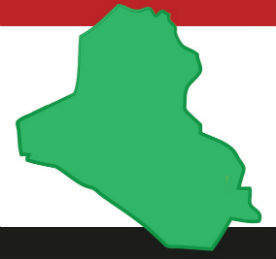While production levels are still forecast to grow, the numerous troubles facing the Iraqi oil sector are likely to rein in its ambitious targets, as Ali Al-Killidar of GlobalData explains.

One of the most significant global oil production growth drivers has been derailed. Upstream development in Iraq has lost pace, as bluntly evidenced by the resignation of the Iraqi oil minister, Adil Abdul-Mahdi, in March 2016. Previously the vice-president of the country for six years, Abdul-Mahdi had been the oil minister for almost two years.
The Iraqi Oil Ministry proposed a target of 12.0mmbd in 2009, which was then followed by a reduced target of 9.0mmbd in 2013. In 2015, Abdul-Mahdi announced a revised crude production target of 6.0mmbd by 2020; current production hovers around 4.3mmbd, while GlobalData forecasts closer to 5.0mmbd by 2020. Budgetary constraints caused by low oil prices, political disputes and prolonged conflict with IS have affected the government’s ability to maintain the tremendous levels of capital investment required to realise targeted production levels, despite the country’s wealth of resources. While the Iraqi Government has signalled that it is open to freezing production along with other OPEC members to boost oil prices, it would still be a challenge to continue growing production in the short term, regardless of a freeze.
The terms of the technical service contracts signed by operating consortiums in Iraq entitle them to the recovery of petroleum costs. These are costs incurred in the production, reinjection, treatment, transportation and delivery of crude, as well as disposal of associated gas within contracted areas. The consortiums’ profit derives from a set remuneration fee, which is determined by the ‘R-factor’, based on the relationship between revenues and costs, and calculated at the end of each calendar year. This structure effectively means the government’s ability to reimburse operators can determine levels of development.
Remaining positive
In 2015, oil produced from Iraq’s newly developed southern fields were found to have an API gravity of approximately 26°. The State Organization for Marketing of Oil (SOMO), the state-run oil marketing company, split its main Basra light crude benchmark into two grades to preserve quality.
The newly implemented benchmark crude, known as Basra heavy crude, sells at a $6.85/bbl discount from the Dubai crude benchmark and is $5.50/bbl cheaper than Basra light crude.
In addition to reduced revenue, the South Oil Company (SOC) had to develop and update infrastructure to enable the new benchmark to be exported, including changing at least one of the single-point moorings to cater for the heavier crude.
Iraq’s southern fields have break-even prices ranging from $9.7/bbl for West Qurna-1 to $21.0/bbl for Majnoon, meaning the fields are profitable in the current low-price environment; however, revenues, which account for 95% of the state’s budget, are not enough to cover all the state’s budgetary expenses and repay oil companies for their investments in the upstream sector.
As a consequence of lower income and increasing capital expenditure, Abdul-Mahdi contacted operators including BP, Royal Dutch Shell and Lukoil to warn that their investments may not be covered. He requested budget cuts in 2015 and 2016 in order to minimise scheduled payments to the consortiums.
Historically, payments amounted to $39.1 billion for the years 2011-14 and, in addition to the $8.5 billion in investments made in 2015, a further $9.5 billion rolled over from 2014. According to Iraqi officials, the potential for a low-price environment was overlooked when the contracts were initially drawn up.
In May 2015, BP agreed to cut its 2015 Rumaila budget by $1.0 billion from the initially planned $3.5 billion, leaving production steady at the current rate of 1.4mmbd. Although the 2016 budget for the field has not been reported, a similar cut in investment is expected, with the primary focus of the operator shifting to offset the natural decline, which has been reported as 17%.
With similar cuts being faced by consortiums across the whole of Iraq, GlobalData expects oil production to grow but at a significantly slower rate than forecast by the ministry. The ministry’s more conservative estimates of 6mmbd by 2020 are still optimistic and, based on the reduced capital expenditure budget, production is forecast to be closer to 5mmbd.
The cost of war
Another bright spot in Iraq has been Kurdistan, where average oil production increased from 313,000bpd in 2014 to 577,000bpd in 2015. Production from this region is expected to continue growing, though at a slower pace than has been achieved so far.
A number of key fields had substantial work carried out during 2015, such as the Taq Taq field, which had a second central processing facility with a 90,000bpd processing capacity constructed. This is expected to come online in Q2 this year.
Other fields expected to contribute to production growth from the region include the Garmian, Atrush and Kurdamir developments. Based on newly developed infrastructure and proposed field development plans, the Kurdistan regional government is expected to attain oil production of 700,000-750,000bpd by 2020, contributing approximately 14% of the country’s production.
With international support, Iraqi authorities have retaken oilfields from IS. During the IS offensive in June 2014, the group took control of the Ajeel, Najma, Hamrin, Qayara, Batma, Qayara, Balad and Ain Zalah fields. Infrastructure sustained extensive damage during the fighting and, in its retreat, IS destroyed much of what remained of the facilities.
The Iraqi Government has lost up to 400,000bpd of production during the conflict and redevelopment to salvage the fields has yet to be planned, partially due to the lingering threat of IS. Should the group be eliminated, the government is likely to reinvest in the restoration of these fields over the long term.
